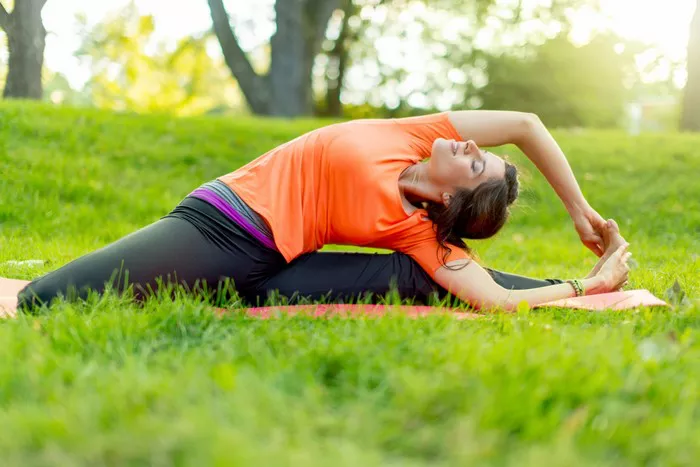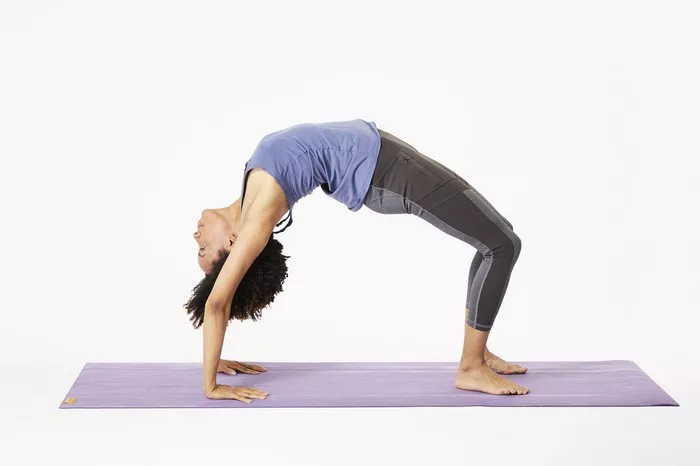Yoga, an ancient practice that originated in India thousands of years ago, has evolved in countless ways over the centuries. Traditionally, it’s seen as a discipline that unites the body, mind, and spirit, helping practitioners achieve harmony and balance. Animal yoga, a more contemporary variation of this practice, is a fascinating approach that integrates the natural movements and behaviors of animals into yoga sequences. It’s designed to not only engage the body physically but to tap into the animal kingdom’s energy, flexibility, and instinctual movements. This article will explore what animal yoga is, its benefits, its connection to traditional yoga, and how it can be practiced.
The Origins of Animal Yoga
While yoga itself has been practiced for millennia, animal yoga is a relatively recent phenomenon, drawing inspiration from various aspects of nature and animal behavior. The concept of mimicking animal movements is not new, as ancient yogis used animal poses to enhance their practice. For example, the “Cat-Cow” pose, a common sequence in yoga, draws from the natural arching and stretching movements of a cat and cow, respectively. However, the modern iteration of animal yoga seeks to deepen this connection by embracing a full range of animal-inspired postures, flows, and philosophies.
Animal yoga is influenced by different forms of physical expression found in the natural world. It emphasizes bodily movements that are fluid and intuitive, much like how animals move in the wild. The practice connects humans to their primal instincts and encourages freedom in movement, creativity, and expression.
Core Principles of Animal Yoga
At its core, animal yoga combines traditional yoga asanas (postures) with the motions and characteristics of animals. These poses are designed to emulate the graceful, strong, and flexible movements observed in the animal kingdom. Animal yoga may not follow a rigid structure but is instead focused on intuitive flow and a connection to nature.
Some of the foundational principles of animal yoga include:
Fluidity and Flexibility: Like animals, practitioners of animal yoga learn to move fluidly, drawing upon the natural flexibility and strength that many animals possess. It encourages the practitioner to move without constraint, promoting an organic, dynamic practice.
Instinctive Movements: Animal yoga focuses on connecting with the body’s natural instincts, much like the instinctual movements observed in animals. The practice promotes awareness of the body’s natural rhythms and encourages the release of tension and stress.
Embodying Animal Energy: Each animal pose represents more than just a physical movement—it reflects the essence or energy of the animal. For instance, the “Lion’s Pose” is not just about stretching; it also embodies the power, courage, and strength of a lion. By adopting the posture of an animal, practitioners tap into the symbolic energy of that creature.
Holistic Health: Animal yoga nurtures both the body and mind. The holistic approach aligns with traditional yoga practices, emphasizing not only physical health but also mental clarity, emotional balance, and spiritual well-being.
Types of Animal Yoga Poses
Animal yoga includes a variety of poses inspired by the movements and postures of different animals. Below are some of the most common animal-inspired poses found in animal yoga:
Cat-Cow Pose (Marjaryasana-Bitilasana): This is a classic example of an animal-inspired pose. In this sequence, practitioners alternate between arching and rounding their spine, mimicking the movements of a cat and a cow. It’s a great pose for warming up the spine and stretching the back, while also improving flexibility and balance.
Cobra Pose (Bhujangasana): Inspired by the graceful upward movement of a cobra, this pose focuses on opening the chest, lengthening the spine, and strengthening the lower back. It can help alleviate tension and improve posture.
Downward Dog Pose (Adho Mukha Svanasana): This is one of the most recognizable yoga poses, drawing inspiration from the way dogs stretch and extend their bodies. This pose strengthens the arms, legs, and core, while also promoting flexibility in the hamstrings and lower back.
Frog Pose (Bhekasana): This pose mimics the crouching and stretching movement of a frog. It opens the hips, stretches the quadriceps and groin, and can improve flexibility and strength in the lower body.
Tiger Pose (Vyaghrasana): In this pose, practitioners start in a tabletop position and extend one arm and the opposite leg, reaching them toward each other. This creates a lengthening effect, much like the stretching movements of a tiger. It strengthens the core and improves flexibility in the spine and hips.
Butterfly Pose (Baddha Konasana): The butterfly pose involves sitting with the feet together and knees open to the sides, resembling the wings of a butterfly. This pose stretches the inner thighs, groin, and knees, promoting flexibility and relaxation.
Lion’s Pose (Simhasana): The Lion’s Pose is an invigorating posture where practitioners sit on their heels, open their mouths wide, and stick out their tongues in a fierce lion-like manner. This pose can help release tension in the face, neck, and chest while also stimulating the throat chakra.
Elephant Pose (Gaja Asana): This pose is an animal-inspired standing posture that encourages grounding and stability. Practitioners interlock their hands together and lift their arms up, mimicking the trunk of an elephant. The focus is on creating a sense of rootedness and balance.
The Benefits of Animal Yoga
Animal yoga offers a wide range of benefits, both physically and mentally. The practice integrates strength, flexibility, coordination, and balance, offering holistic benefits that touch on every aspect of health. Below are some of the key benefits:
Improved Flexibility: Many animal yoga poses focus on deep stretches and dynamic movements that enhance flexibility, particularly in the spine, legs, and hips. This increased flexibility can lead to better mobility and reduced stiffness in the body.
Enhanced Strength: Animal yoga often involves holding postures for extended periods or flowing through a sequence of movements. This builds strength, particularly in the core, arms, legs, and back. Stronger muscles provide better support for the body and can prevent injuries.
Increased Mindfulness: Animal yoga encourages practitioners to become more aware of their body movements and breath. It promotes a deeper connection with the body and nature, fostering mindfulness and reducing mental clutter.
Stress Reduction: The fluidity and natural movements in animal yoga help activate the parasympathetic nervous system, which promotes relaxation. Regular practice can reduce stress levels and help manage anxiety.
Improved Posture: Many of the animal-inspired poses focus on aligning the spine and opening up the chest and hips. This can lead to improved posture and a more balanced body alignment.
Connection with Nature: By mimicking the movements of animals, practitioners develop a sense of oneness with the natural world. This connection can be deeply therapeutic and grounding.
Emotional Healing: Animal yoga encourages releasing pent-up emotions, especially in poses like the Lion’s Pose, where the expression is bold and fierce. It allows for emotional expression and can help release stored tension from the body and mind.
How to Practice Animal Yoga
If you’re interested in incorporating animal yoga into your routine, here are some tips to get started:
Start with Basic Poses: Begin by familiarizing yourself with basic animal-inspired poses, such as Cat-Cow, Downward Dog, and Cobra. These poses are accessible to beginners and can help you understand the movements and flow of animal yoga.
Focus on Breath: Like traditional yoga, animal yoga places a significant emphasis on breath. Breathing deeply and consciously while performing the movements will help you tap into the energetic flow of the animals you’re embodying.
Integrate Fluid Movements: Animal yoga isn’t just about holding poses; it’s about fluid movement and creativity. Feel free to flow between different animal-inspired postures, allowing your body to move naturally and without restriction.
Embrace the Spirit of the Animal: When practicing animal yoga, focus on embodying the energy of the animal you’re mimicking. For instance, adopt the playful, energetic nature of a dog in Downward Dog, or channel the strength and courage of a lion in Lion’s Pose.
Consistency is Key: Like any yoga practice, consistency is important. Aim to practice regularly, whether it’s for a few minutes each day or during a longer session a few times a week. Over time, you’ll notice improvements in your strength, flexibility, and overall well-being.
Animal Yoga for Children and Families
One of the unique aspects of animal yoga is its appeal to children and families. Animal yoga is often introduced to children because of its fun, playful nature. Children can learn to mimic animals and integrate their imagination into their practice. This helps them develop motor skills, coordination, and flexibility, all while having fun.
Parents can practice animal yoga with their children to bond over the shared experience and enjoy the benefits together. Animal yoga sessions for families often involve storytelling, where children can pretend to be animals, exploring their movements and expressing themselves freely.
Conclusion
Animal yoga is a dynamic and playful approach to yoga that draws on the movements and behaviors of the animal kingdom. By incorporating animal-inspired poses into a yoga routine, practitioners can experience a deeper connection to their bodies, the natural world, and their innate instincts. Whether you are looking to increase your flexibility, reduce stress, or connect with nature, animal yoga offers a holistic and accessible practice for individuals of all ages and experience levels. By embracing the power, grace, and fluidity of animals, animal yoga helps to awaken a deeper sense of balance, vitality, and self-awareness.
Related Topics:

























